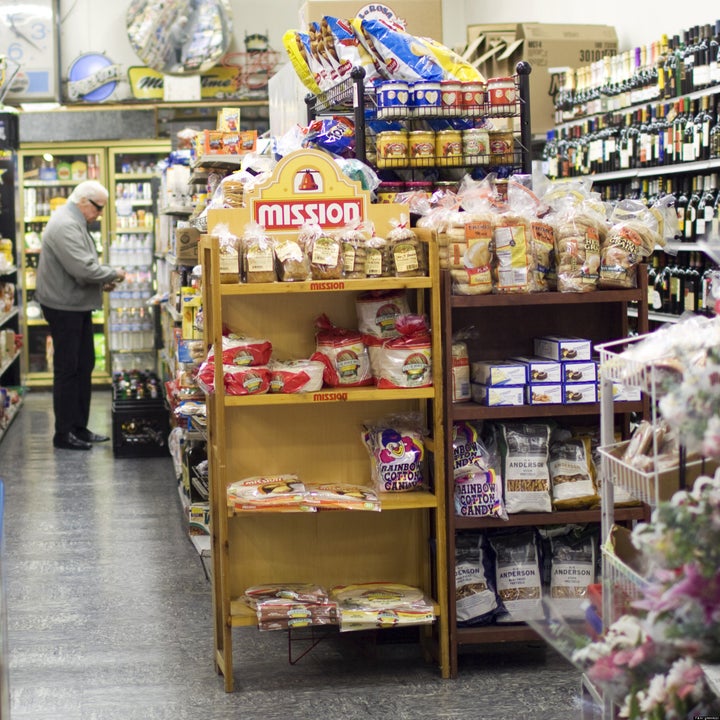
Is your neighborhood making you fat? According to several studies, it just might be. Most individuals know that the keys to good health are a combination of good nutrition, regular physical activity, stress management and genetics. Nutrition and regular physical activity, however, can take a back seat when your environment is one in which access to healthy foods -- or even safe sidewalks -- are almost impossible to find.
A recent study in the Journal of Planning Education and Research found that women who lived closer to a convenience store than a grocery store were more likely to have a higher body mass index (BMI). To understand why this association was identified, it may be important to look at the overall availability of food at your local convenience store or gas station. Gas stations, movie theatres, the ball park, and even your local mall's food court are areas that offer what I refer to as "secondary dining." The main goal of these food establishments is to provide a service or entertain you; not to feed you nutritiously. These places rely on food that can be prepared quickly and conveniently using salt, fat and sugar to enhance flavor and taste rather than fresh produce, healthy fats and spices.
For example, consider the offerings at convenience store. You walk in and can choose from a variety of calorie-dense, nutritionally sparse foods such as breakfast sandwiches, pastries and muffins, chips, candy, cookies, ice cream, sugary sodas, juices and frozen drinks, as well as a smorgasbord of prepared hot items like pizza, hot dogs and wings. At first glance, the most nutritious food you're likely to find at most is coffee and that assumes you don't add a flavored creamer or sugar. Although some convenience stores have started providing fresh fruit, smoothies and salads, they are not common in most neighborhoods. Even if they are available, these items are often priced out of range for most of their consumers.
For most of us, convenience stores are just that: a place of convenience. A place to go if we need a gallon of milk or to satisfy a chocolate craving. It's not a place where we shop for our groceries. But, for some, a convenience store is a grocery store. The nearest actual grocery store might be 10 miles away which, if transportation is not available, makes it pretty difficult to patronize. For individuals in this predicament -- many of which are included in the aforementioned study -- it is not surprising that their BMIs are higher than average.
So what, realistically, can be done? Currently, many local and national organizations are working towards providing better access to affordable, healthy foods in areas like the one I described above -- areas commonly referred to as "food deserts." You can help, too. If you know someone with limited access to healthy food or if the scenario described in this blog describes your situation, consider taking some or all of these steps:
1) Become a community advocate and encourage others to join you in your mission. Research existing stores within the area and communicate with store owners to determine if opportunities exist to offer more fruits, vegetables and whole grains.
2) Find out who your city planners are and schedule visits with them to discuss better options in your neighborhood. Identify and contact farmers market vendors to determine if they are able to set up a farmers market in your community.
3) Gather residents together to plan a community garden. Click here for steps on getting started.
4) Think about starting a community supported agriculture (CSA) program or find one near you by clicking here.
5) Finally, if possible, find transportation or carpool options that can bring you to large grocery stores every few months. Once there, you can purchase frozen fruits and vegetables, as well as other foods that freeze well (such as whole-grain breads and lean meats like chicken or turkey breast). You can also purchase and easily store non-perishable items that give you ultimate nutritional bang for your buck such as beans (all varieties), brown rice, and whole grain cereals and crackers.
But food deserts are only part of the problem. Many U.S. neighborhoods have limited access to "active living" environments -- places where individuals can exercise safely. New York City is taking a lead by starting active urban design initiatives in which they partner with several departments of design as well as leading architectural firms to create spaces that encourage physical activity.
The great part is that New York City is not alone in this effort. Many other communities throughout the United States are following their lead, including places in Ohio. I asked David Pauer, founder of Active Living Ohio, why creating an environment that fosters active living is so important. He stated that "for those of us who can't get to a gym on a regular basis, a walkable and bike-able community can provide the daily opportunity to burn calories and get the physical activity that is so important for overall health." Pauer suggests getting involved with local initiatives aimed at creating such environments. To see what your community is doing, visit www.activelivingbydesign.org/communities.
The problem of limited healthy food availability and active living environments is not just a problem for our civic leaders and the government. We're all responsible.
What will you do to improve it?
